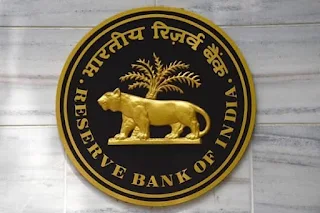
- In absolute terms, the amount of CAD in Q2FY23 was $36.40 billion, which was a record high.
- It was 4.4% of GDP, the highest level since the second quarter of 2013.
- India's current account deficit (CAD) has increased from US$ 18.2 billion (2.2% of GDP) in Q1FY23 and US$ 9.7 billion (1.3% of GDP) in Q2FY22.
- Net service receipts climbed both sequentially and y-o-y, while services exports recorded growth of 30.2% on a year-over-year (y-o-y) basis, led by exports of software, business, and travel services.
- Private transfer receipts increased by 29.7% to $27.4 billion in 2021, primarily due to remittances from Indians working abroad.
- India’s Balance of Payments (BoP) in Q2FY23
- India had a $30.4 billion deficit in its foreign exchange reserves on a BoP basis, as opposed to a $31.2 billion surplus in the second quarter of fiscal year 22.
- Net Foreign Direct Investment (FDI) in the financial account fell from US$ 8.7 billion in Q2FY22 to US$ 6.4 billion.
- In contrast to net withdrawals of US$ 0.8 billion in Q2FY22, non-resident deposits had net inflows of US$ 2.5 billion.
- In contrast to the accretion of US$ 31.2 billion in Q2FY22, there was a loss of US$ 30.4 billion in foreign exchange reserves (on a BoP basis) in Q2FY23.
- Banks’ net NPA ratio at 10-yr low:
- The Financial Stability and Development Council (FSDC) Sub-assessment Committees of the risks to financial stability and the resilience of the financial system are contained in the 26th Financial Stability Report (FSR), which was also released by the RBI. It is released every two years.
- In September 2022, the scheduled commercial banks' (SCBs') gross non-performing asset (GNPA) ratio plummeted to a seven-year low of 5% and their net non-performing asset (NNPA) ratio to a ten-year low of 1.3%.
- Under the baseline, medium, and severe stress scenarios, the system-level capital to risk-weighted assets ratio (CRAR) is predicted to be 14.9%, 14%, and 13.1% in September 2023, respectively.
- Current Account Deficit:
- A current account deficit is a situation in which a country's total imports of goods, services, and financial transfers are greater than its total exports. This means that the country is spending more money on foreign products and services than it is earning from its own exports.
Question:
Q.1 The amount of CAD was how much in Q2FY23 as per the recent RBI report?
a. $33.40 billion
b. $35.40 billion
c. $36.40 billion
d. $50.40 billion
a. $33.40 billion
b. $35.40 billion
c. $36.40 billion
d. $50.40 billion


